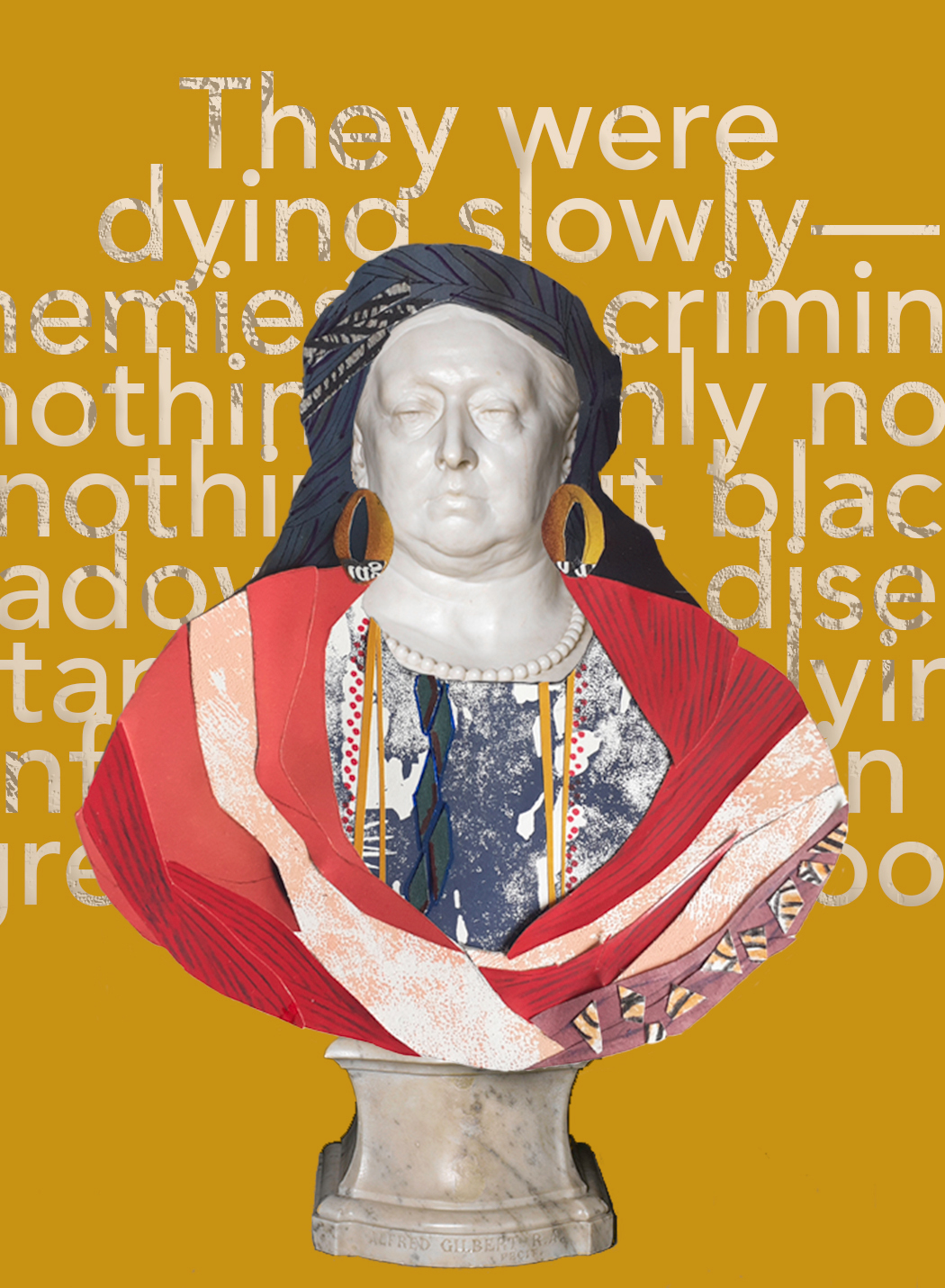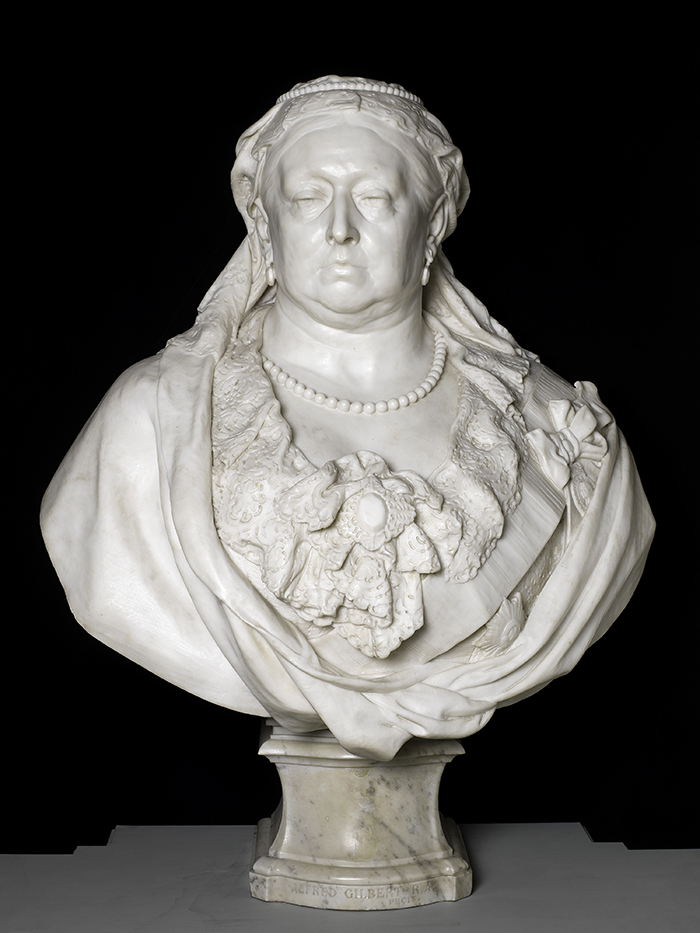Carole Bouvier's collage wraps the Fitzwilliam Museum's marble portrait of Queen Victoria in patterns inspired by traditional Nigerian fabrics.
Queen V: the roots of cultural appropriation
Collage

Just visible in the background are words from Joseph Conrad's Heart of Darkness (1899), a novella that explores European imperialism: "They were dying slowly - it was very clear. They were not enemies, they were not criminals, they were nothing earthly now—nothing but black shadows of disease and starvation, lying confusedly in the greenish gloom."
Museum Remix Guest Curator Lucian Stephenson writes, "This work drew my attention immediately. ... It had a deep ominousness to it."
The object that inspired the artwork: Portrait of Queen Victoria by Sir Alfred Gilbert

This larger-than-life portrait of Queen Victoria, ageing, careworn, and sad, was sculpted between 1887-1889 as she celebrated 50 years on the throne.
As a portrait of an obviously older, powerful woman (Victoria was aged 68), it's unusual in a museum gallery, where the walls are covered with young beauties. But she is also a powerful symbol of the British Empire. Portraits in museums allow us to think about who was celebrated in the past, and how our opinions of them may have changed over time. Given what we know about the enormous impact of the British Empire, the millions of deaths it caused and its ongoing impacts around the world, how should we respond to the sculpture? How should it be displayed?
Artist Carole Bouchier says, "What would queens and kings of that time have looked like if they had adopted some of the traditions of the countries they invaded? Would the term cultural appropriation have existed earlier? One question in particular stayed with me and became the theme of this submission: would cultural appropriation exist without an initial denial of the very same culture?"
This artwork is part of the Museum Remix: Unheard project, and is featured in the Museum Remix: Woven Histories digital exhibition.





